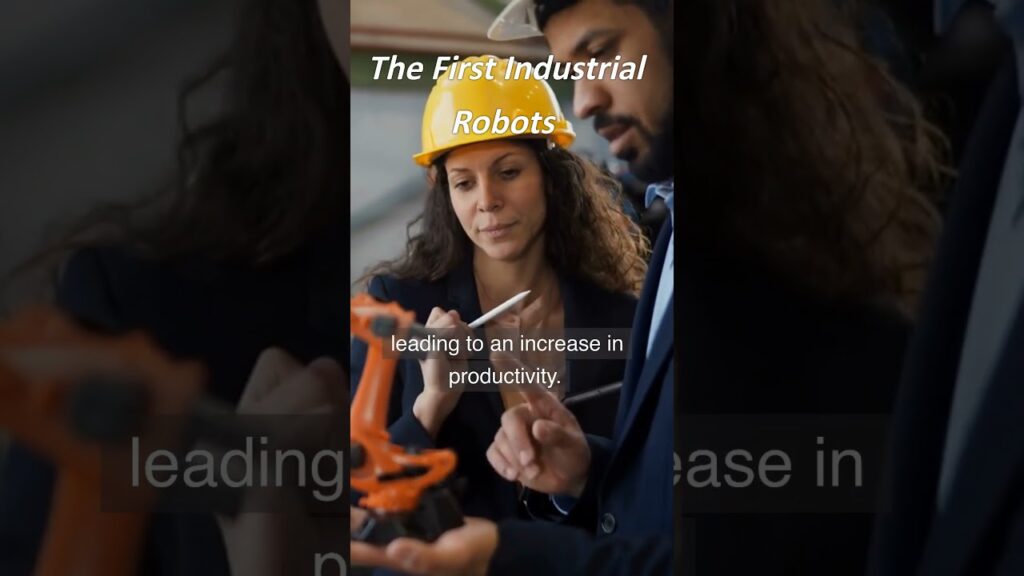In 1954, George Devol developed the first true industrial robot, the Unimate. This revolutionary invention changed the landscape of the manufacturing industry and paved the way for the automation and efficiency we see today. Industrial robots have become an integral part of many manufacturing processes, streamlining operations, increasing productivity, and enhancing overall quality.
The use of industrial robots in manufacturing has grown significantly over the years. These robots are designed to perform repetitive and mundane tasks, allowing human workers to focus on more complex and creative aspects of production. With their high precision and speed, industrial robots are invaluable assets in industries such as automotive, electronics, pharmaceuticals, and food processing.
One of the key benefits of using industrial robots in manufacturing is the improvement in efficiency. These robots have the ability to work continuously without breaks, reducing production time and increasing output. They can operate at a much higher speed than humans, ensuring that tasks are completed in a fraction of the time. This not only saves time but also allows manufacturers to meet tight deadlines and maintain a competitive edge in the market.
Moreover, industrial robots contribute to enhancing the quality of products. With their accuracy and precision, these robots can consistently perform tasks without errors or variations. This eliminates the risk of human error and ensures that each product meets the desired specifications. Whether it is assembling components, welding, or painting, industrial robots can achieve a level of perfection that is difficult to match by humans.
In addition to efficiency and quality, industrial robots also offer inherent safety advantages. They are designed to work in hazardous environments, eliminating the need for human workers to be exposed to risky conditions. For example, in the field of welding, robots can withstand extreme heat and fumes, reducing the risk of accidents and injuries. By delegating dangerous tasks to robots, manufacturers can prioritize worker safety and minimize workplace incidents.
The implementation of industrial robots in manufacturing also leads to cost savings for companies. While the initial investment in robot systems may be significant, the long-term benefits outweigh the costs. Once installed, these robots require minimal maintenance and can operate continuously without the need for breaks, holidays, or sick leaves. Furthermore, the high speed and efficiency of industrial robots result in increased productivity, leading to higher output in less time, and ultimately, improved profitability for businesses.
As the demand for automation continues to rise in the manufacturing industry, the capabilities of industrial robots are evolving. Advancements in technology have made these robots smarter, more adaptable, and capable of performing complex tasks. With the integration of sensors, artificial intelligence, and machine learning, industrial robots can now analyze data, make decisions, and even learn from their own experiences. This level of intelligence enables them to adapt to changing production requirements and optimize processes for maximum efficiency.
Nevertheless, the adoption of industrial robots in manufacturing does raise concerns about potential job displacement. As robots take over repetitive tasks, some fear that human workers will be left unemployed. However, studies have shown that the integration of industrial robots actually leads to job growth. Companies that invest in automation tend to experience expansion and create new job opportunities in areas such as robot programming, maintenance, and supervision. Furthermore, by offloading monotonous tasks to robots, human workers can be upskilled and repositioned in more fulfilling roles that require creativity and critical thinking.
In conclusion, industrial robots have revolutionized the manufacturing industry since George Devol introduced the first true industrial robot, the Unimate, in 1954. Their impact on efficiency, quality, safety, and cost savings cannot be overstated. Industrial robots continue to evolve and adapt to meet the changing demands of manufacturing, making them indispensable assets for businesses in various sectors. As we move forward, the synergy between human workers and industrial robots will define the future of manufacturing, driving progress and innovation in the industry.
Industrial Robot
“Revolutionizing Manufacturing: The Evolution of Industrial Robots from Their Genesis”


